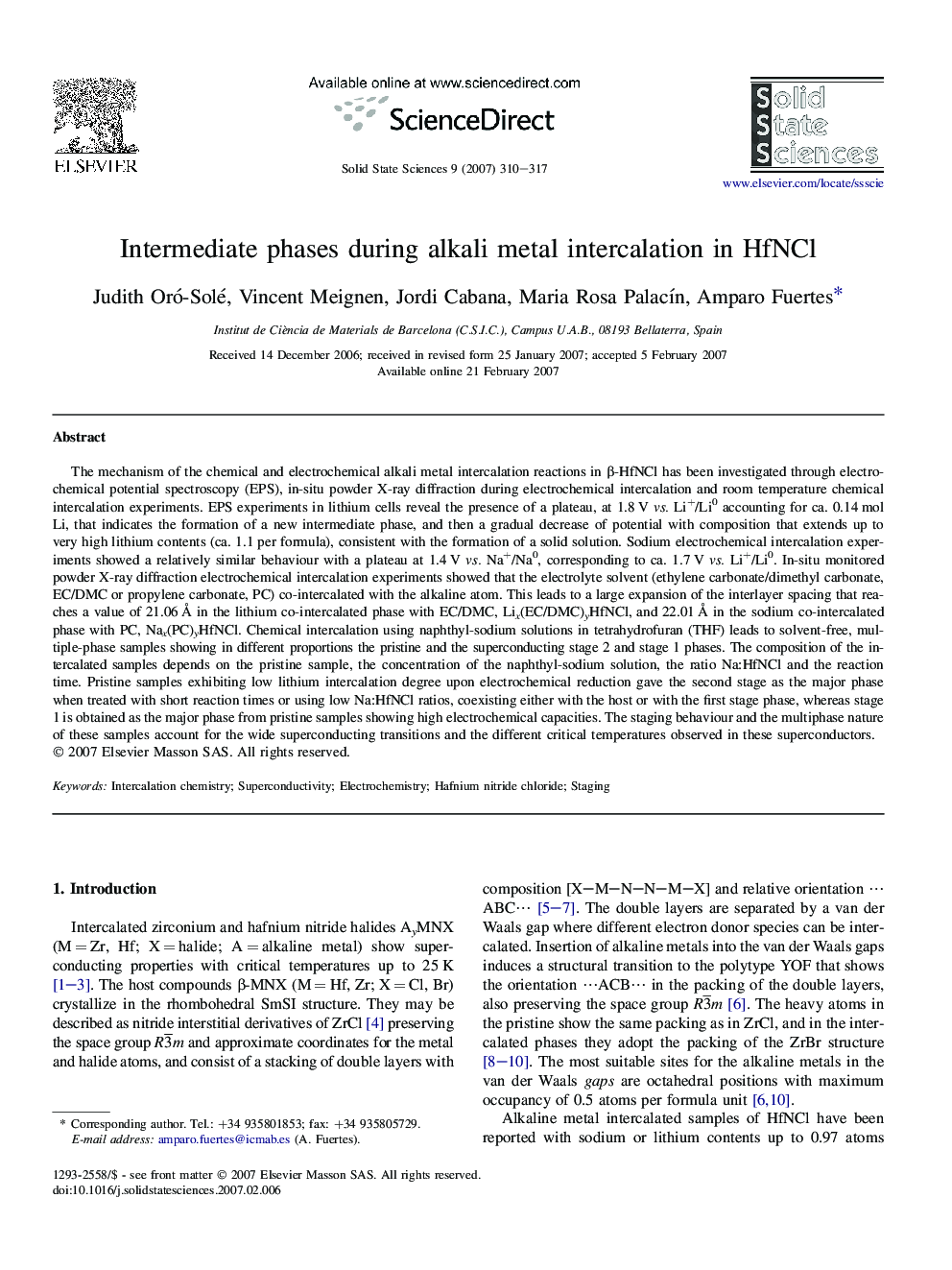| کد مقاله | کد نشریه | سال انتشار | مقاله انگلیسی | نسخه تمام متن |
|---|---|---|---|---|
| 1506831 | 1511010 | 2007 | 8 صفحه PDF | دانلود رایگان |

The mechanism of the chemical and electrochemical alkali metal intercalation reactions in β-HfNCl has been investigated through electrochemical potential spectroscopy (EPS), in-situ powder X-ray diffraction during electrochemical intercalation and room temperature chemical intercalation experiments. EPS experiments in lithium cells reveal the presence of a plateau, at 1.8 V vs. Li+/Li0 accounting for ca. 0.14 mol Li, that indicates the formation of a new intermediate phase, and then a gradual decrease of potential with composition that extends up to very high lithium contents (ca. 1.1 per formula), consistent with the formation of a solid solution. Sodium electrochemical intercalation experiments showed a relatively similar behaviour with a plateau at 1.4 V vs. Na+/Na0, corresponding to ca. 1.7 V vs. Li+/Li0. In-situ monitored powder X-ray diffraction electrochemical intercalation experiments showed that the electrolyte solvent (ethylene carbonate/dimethyl carbonate, EC/DMC or propylene carbonate, PC) co-intercalated with the alkaline atom. This leads to a large expansion of the interlayer spacing that reaches a value of 21.06 Å in the lithium co-intercalated phase with EC/DMC, Lix(EC/DMC)yHfNCl, and 22.01 Å in the sodium co-intercalated phase with PC, Nax(PC)yHfNCl. Chemical intercalation using naphthyl-sodium solutions in tetrahydrofuran (THF) leads to solvent-free, multiple-phase samples showing in different proportions the pristine and the superconducting stage 2 and stage 1 phases. The composition of the intercalated samples depends on the pristine sample, the concentration of the naphthyl-sodium solution, the ratio Na:HfNCl and the reaction time. Pristine samples exhibiting low lithium intercalation degree upon electrochemical reduction gave the second stage as the major phase when treated with short reaction times or using low Na:HfNCl ratios, coexisting either with the host or with the first stage phase, whereas stage 1 is obtained as the major phase from pristine samples showing high electrochemical capacities. The staging behaviour and the multiphase nature of these samples account for the wide superconducting transitions and the different critical temperatures observed in these superconductors.
Figure optionsDownload as PowerPoint slide
Journal: Solid State Sciences - Volume 9, Issues 3–4, March–April 2007, Pages 310–317